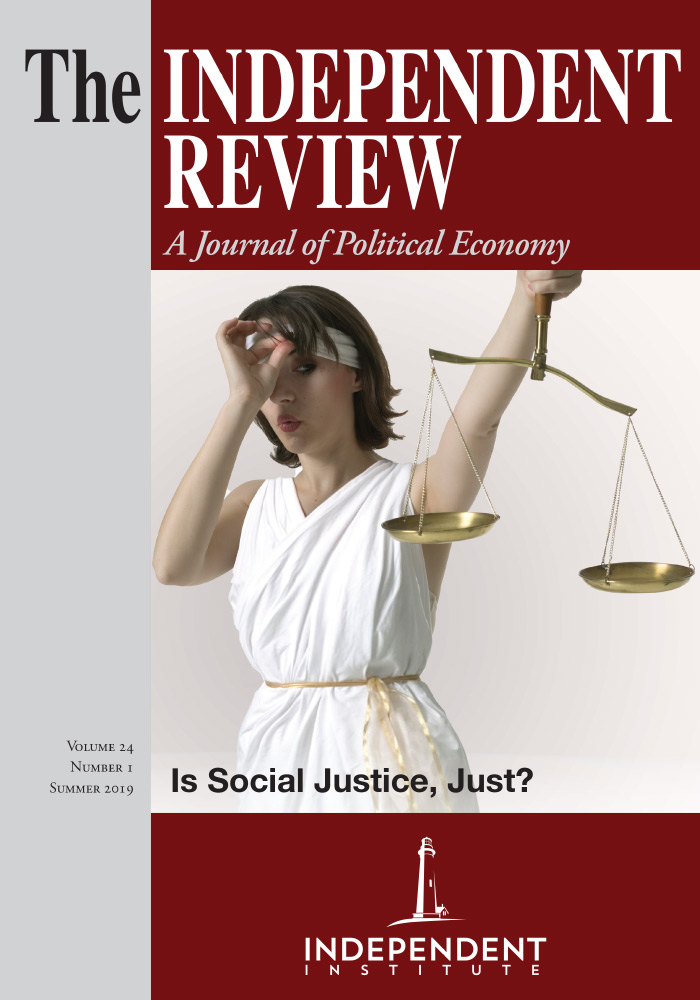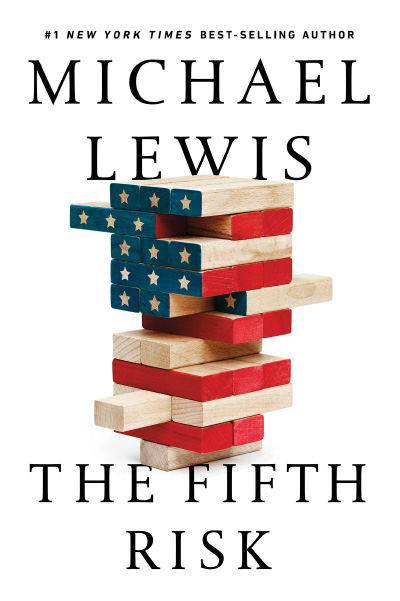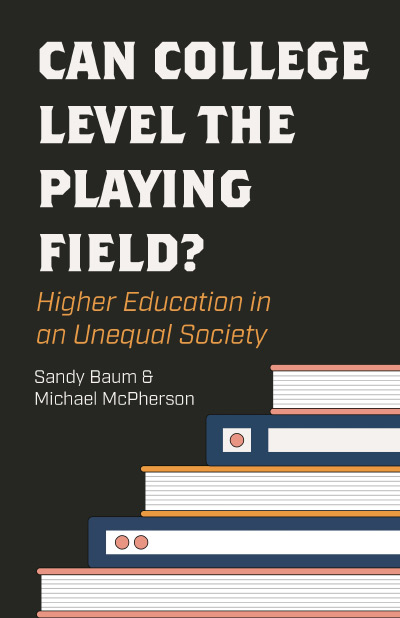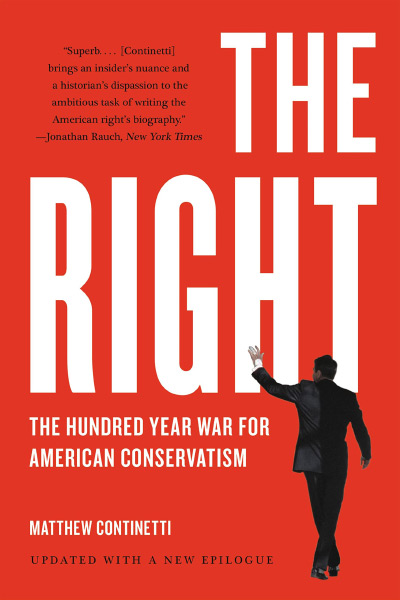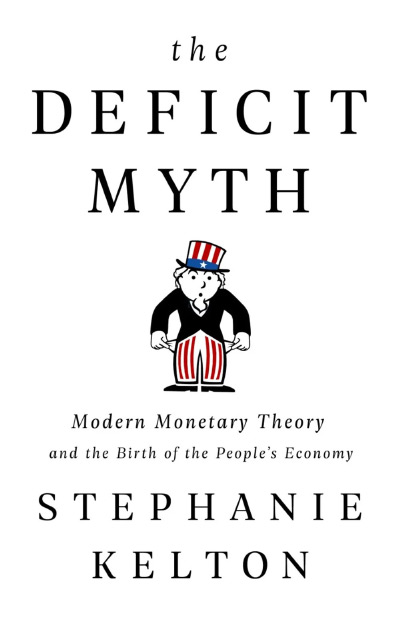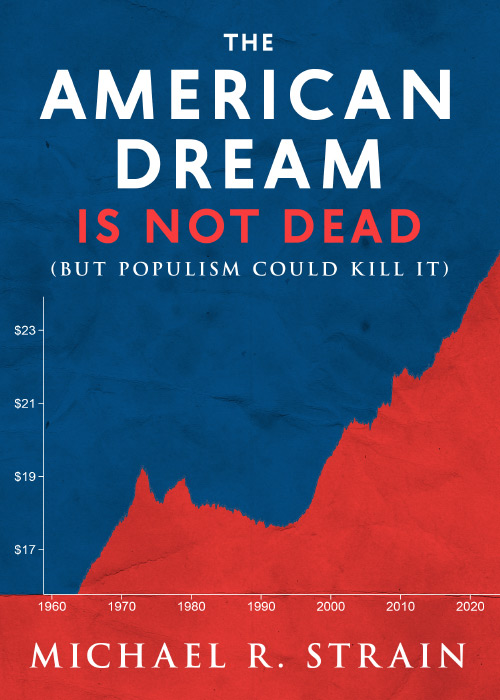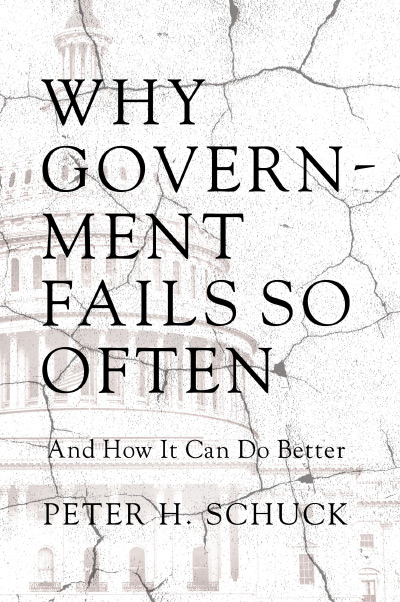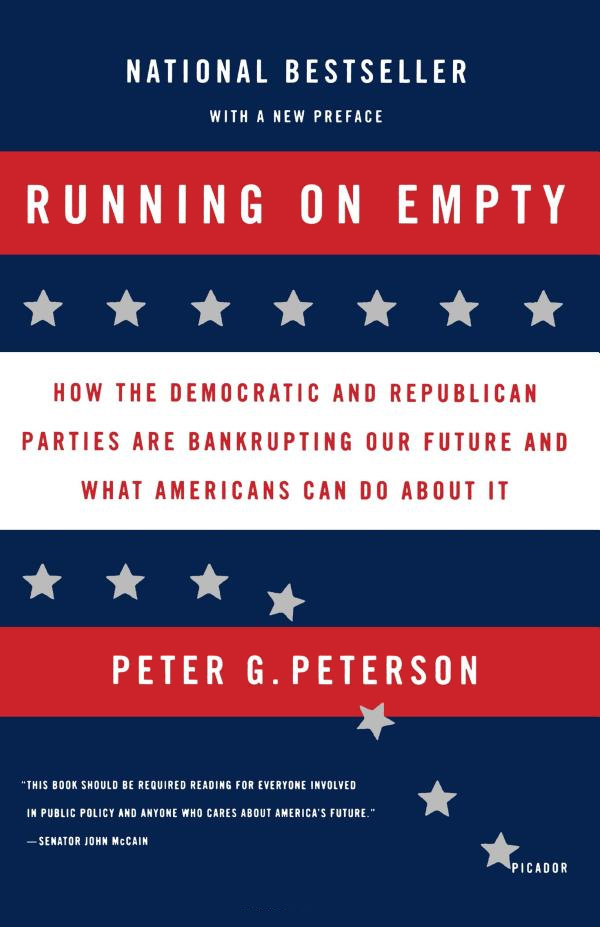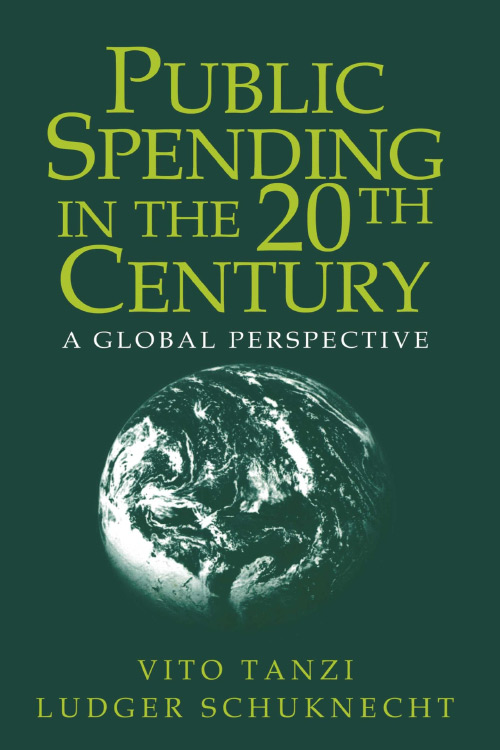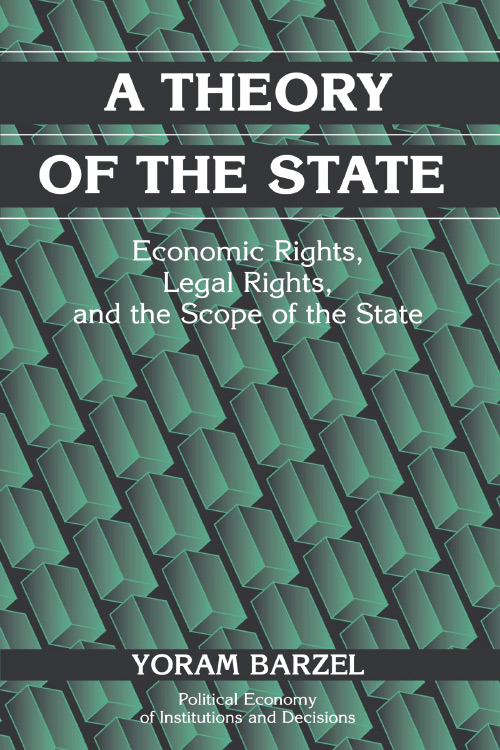The Fifth Risk can be thought of as a book to celebrate the dedicated government employees who labor in obscurity to make all of us safer. Michael Lewis’s main motivation, however, is to convince readers that government workers would serve the public more effectively if Donald Trump’s uninformed and shortsighted administration was replaced with a more informed and farsighted one.
One can sympathize with much of Lewis’s criticism of the Trump administration without sharing his confidence that an administration with better people would better serve the public and correct government and market failures. Also, the book’s title is mysterious. Lewis barely discusses the five risks and fails to consistently label the fifth. And even though his subtitle is Undoing Democracy, Lewis never mentions the most appalling risk that such an undoing would threaten.
Lewis begins with the difficulty of getting Trump to set up a presidential transition team during the primary season even though it was legally required. And he threatened to shut it down after he became the Republican nominee. According to one of his advisers, few Americans had less interest in the federal government than Trump. He ignored advice on “people to staff [his] administration” after he was elected. His close advisor at the time, Steve Bannon, is quoted as complaining “Holy f**k, this guy doesn’t know anything. And he doesn’t give a s**t” (p. 30).
The morning after the election, a Department of Energy (DOE) team showed up early to the new president’s representatives as was routine. However, no one from the new administration showed up. Two weeks after the election, DOE’s Obama people discovered that Trump had “created a small ‘Landing Team’” that was headed by, and mostly consisted of, Thomas Pyle, a lobbyist largely funded by Koch Industries (p. 36). A month after the election, Pyle finally met with the Energy Secretary, but “appeared to have no interest in anything he had to say” (p. 37). Despite invitations, Pyle never returned—although he did send a list of questions, some requesting the names of DOE employees or contractors who had attended meetings on climate change. The DOE Secretary ignored them. During his confirmation hearing to be the DOE Secretary, Rick Perry said “how useful it was being briefed by the former secretary.” When Lewis asked someone familiar with the briefing how many hours it lasted, the answer was “That’s the wrong unit of account” (p. 45, 46).
The U.S. Department of Agriculture also prepared to meet with Trump’s USDA transition team the day after the election, but no one showed. Two weeks after the election the head of the team, a lobbyist for PepsiCo, “made a cameo appearance for about an hour.” More than a month after the election, one member of the team made an appearance and was politely refused when he also requested names of those working on climate change.
Trump nominated Wilbur Ross to be the Secretary of Commerce at the end of November, and a few weeks later he showed up by himself for a single meeting. In March, the White House called in a veteran of George W. Bush’s Commerce Department to brief Ross. According to Lewis, Ross and his staff knew nothing about the National Oceanic and Atmospheric Administration (NOAA), which received sixty percent of the Department’s $9 billion budget. When told that the Department of Commerce primarily has “a science and technology mission,” Ross reportedly responded: “Yeah, I don’t think I want to be focusing on that” (pp. 159, 161–162), Believing he had been brought in to suggest good people to run NOAA (traditionally scientists), the Bush official left a list of a few “qualified Republicans unoffensive to Trump . . . who could do the job well enough.” Six months later Barry Meyers was nominated. He wasn’t on the list or a scientist but the wealthy CEO of AccuWeather, a successful for-profit provider of weather forecasts and warnings (p. 162–63).
If Lewis knew of any Trump appointees to head major federal agencies who were not so easily lampooned, he didn’t discuss them. It’s certainly possible that Trump’s appointees have been disappointing compared to their private-sector successes. But, as opposed to Lewis’s view, that could be because putting capable people into a government job is more likely to reduce their performance than to improve the performance of government. With that in mind, let’s consider some of the impressive federal workers Lewis features in The Fifth Risk.
Lillian Salerno is an impressive woman. She was raised in a poor family with nine children in a small Texas town, waited tables to help pay her way through college, started a successful company, and won a lawsuit against a large competitor for hampering her business with anticompetitive practices. This led to a job in the Obama administration’s Department of Agriculture, which gave her control over $30 billion a year worth of grants and low-interest loans for rural development. Despite the inefficiencies she saw in “the big messy federal government” she was convinced it was the only means of dealing with “a growing crisis: the destruction (misspelled as “deconstruction” in the book) of rural America” (p. 121). She blames the loss of some towns’ entire businesses on Walmart and “a hole in the American capital markets: they simply didn’t reach small towns” (p. 121). She doesn’t explain how Walmart got into these small towns. She is confident, however, that “the more rural the American, the more dependent he is for his way of life on the U.S. government” (p. 121). There is no consideration that this is a failure of rural development policies, or that she or anyone else in government possesses Hayek’s “dispersed knowledge of time and place” needed to know whether a small town should grow, stay the same, or decline. Instead she is disturbed that the more dependent small-town residents are, the more likely they voted for Trump. When “elected and state officials almost everywhere in the South” criticized government, she wanted to tell them that we (government employees) “are the only reason your s***y state is standing” (p. 120). Was this her campaign slogan when she returned to Texas to run for Congress after Trump was elected and sent mostly “white men in their twenties” (p. 123) to the Department of Agriculture? Maybe it was. The Fifth Risk fails to note that she lost by more than two to one in the 2018 Democratic primary runoff in Texas’s 32nd Congressional District.
John MacWilliams, despite having “enjoyed success in the free market . . . [has] a less than Panglossian view of its inner workings” (p. 62). He was hired during the Obama administration as DOE’s first-ever chief risk officer to evaluate its $70 billion loan program, which lends money “at very low interest rates, to businesses, so that they might develop game-changing energy technologies” (p. 61). To explain why MacWilliams was such an attractive hire, Lewis tells us “the idea that the private sector underinvests in energy innovation is part of the original story of the DOE” (p. 61). He implausibly continues that fracking “was not the brainchild of private-sector research but the fruit of research paid for twenty years ago by the DOE” (p. 61). The question Lewis doesn’t address is this: Why didn’t the federal government make productive use of this research long ago? Could it be that doing so would require acknowledging that much that has been, and is still being, learned about fracking comes from the feedback and incentives that markets generate but government doesn’t? MacWilliams, like Lewis, has no lack of confidence in government’s ability to back good investments without troublesome markets. He’s sure government hasn’t been “taking nearly enough risks” (p. 63). Why? Because, he says, no one pays “any attention to [the loan program’s] successes, and its one failure—Solyndra—had allowed right-wing friends of Big Oil to bang on relentlessly about government waste and fraud and stupidity” (emphasis added, p. 62). Lewis and MacWilliams are apparently unaware of additional “green technology” defaults during the Obama Administration. Solyndra cost taxpayers over half a billion dollars, but there were also massive losses at Abound Solar, A123 Systems, and others that reached $3 billion, as detailed in William Butos and Thomas McQuade, “Causes and Consequences of the Climate Science Boom” (The Independent Review, Spring 2015: 187–88). In addition, MacWilliams apparently believes that all the other green-energy government policies, such as ethanol, solar, wind, and electric cars would have been successes without government subsidizing them directly, requiring consumers to buy them, or subsidizing consumers to do so, while ignoring the high marginal costs and low (possibly negative) marginal benefits that markets would have revealed. MacWilliams is an impressive fellow; holding, I discovered, degrees from Stanford, MIT, and Harvard. Much less impressive is his ability to make or evaluate investment decisions made without the information provided by market feedback.
No one can doubt Kathy Sullivan’s ability. She is an oceanographer, an astronaut (three shuttle flights and the first woman to walk in space) plus an undersecretary of commerce for NOAA from 2014 to 2017. As opposed to NASA, she regrets NOAA had no heroes, even though like NASA, she believes NOAA had people who did heroic things (saving thousands of American lives with NOAA weather storm warnings). Sullivan said, “You really cannot market NOAA” (emphasis in original). She was troubled by the relationship between people and their government as “the sense of identity as Citizen has been replaced by Consumer. The idea that government should serve the citizens like a waiter or concierge, rather than in a ‘collective good’ sense” (p. 192). Sullivan recognized that “people didn’t respond to raw data; they respond to other human beings, to trusted voices. . . . what this storm may do to you—was often buried after many paragraphs of geeky weather details” (p. 194). This could explain one of only two things Lewis mentions regarding her accomplishments at NOAA: In 2014 she “helped to persuade Congress to write into law the idea that social science was part of NOAA’s mission” (p. 196).
Interestingly, two colleagues of Sullivan were dismissive of market profits that were reducing her “geeky weather details” problem. Kim Klockow, the “first, and only, social scientist” hired by NOAA in 2014, was frustrated at a meeting when talking about the need for more data on how humans respond to weather information.” Barry Meyers, [AccuWeather’s CEO] who had been appointed to head NOAA (as discussed earlier), told her that she shouldn’t be concerned about communicating with the public, prompting Klockow to wonder “What can we do . . . without interfering with the profits of AccuWeather?” (p. 207). Sullivan’s other colleague, DJ Patil, was sympathetic since he saw “nothing arbitrary or capricious about the Trump administration’s” data suppression, telling Lewis that “Under each act of [such] suppression usually lay a narrow commercial motive,” followed by several examples he attributed to Trump (p. 188). Such special-interest corruption of political decisions is a failure inherent in the political process and hardly unique to the Trump administration, but Patil saw the problem as a rift coursing through American government which “was between the people who were in it for the mission, and the people who were in it for the money” (pp. 188–89). Klockow agreed when saying that “Everyone in the Weather Service is . . . drawn to the mission of helping other people” (p. 201). She obviously didn’t include Barry Meyers.
Meyers, as presented by Lewis, is an unappealing individual. He tried unsuccessfully in 2005 to get federal legislation passed to limit the National Weather Service’s ability to communicate with the public (p. 169). But he was concerned with “helping other people” even if it was for a reason Patil and Klockow frowned upon. He knew that communicating weather information and storm warnings to the public in a more interesting and compelling way than “the jargon-laden bulletins” Sullivan complained about (p. 194) was the best way to save lives and increase AcccuWeather’s profits. Even Klockow acknowledged that “the market for TV weather news is fiercely competitive” (p. 205). One doesn’t have to believe that Meyers is as public-spirited as Klockow and Patil (as portrayed by Lewis) to believe he contributed more to human welfare by responding to market incentives than is generally possible by being “drawn to the mission of helping other people” in a process without those incentives.
Almost everyone recognizes that governments and markets fail to work perfectly, but they typically see different approaches as the best way to correct those failures. The most common suggestion for correcting government failures is to vote for more publicly-spirited politicians who will supposedly enact better policies and hire more dedicated and competent government workers. This suggestion is clearly implicit in Lewis’s book. On the other hand, hardly anyone suggests that market failures can be corrected by hiring better CEOs and more dedicated and competent workers. This reflects the view that market decisions are based primarily on self-interest, and markets fail when market incentives don’t align self-interest with the public-interest. In this case the prevailing view is that government must step in with corrective taxes, subsidies, and regulations.
Public choice economics differs from Lewis’s and the popular view, by believing political decision makers are no less motivated by self-interest than are market decision makers. Expecting government leaders and workers to serve the public interest guided only by good intentions is no less foolish than expecting the same from market leaders and workers. Fortunately, market prices generate information and incentives that make it possible for multitudes of strangers, each pursuing their own interests, to engage in mutually beneficial cooperation. Of course, a major function of government is to enforce the rights and rules needed for these prices to emerge from market exchange. Unfortunately, the coercive power government needs to enforce those rights and rules is invariably used by political agents and their special-interest clients to capture private benefits at the expense of the public by distorting markets, diminishing economic productivity, and creating many of the so-called market failures government is supposed to correct. Constitutional restrictions are our best hope for limiting the use of government power largely to publicly beneficial activities, but even the most successful constitutions tend to lose their ability to restrain the misuse of government power over time. There are serious risks from the expansions of that misuse of power which are more troubling than government’s economic mismanagement. As if wars aren’t bad enough, it has been estimated that governments killed several times more of their own citizens than died in combat during the twentieth century. And the more control a government has over the economy the more likely it is to kill its own citizens.
The risk of government power leading to genocide in America and Western European democracies is commonly dismissed, even though much has been written recently about the rise of populism increasing that threat. Yet, in keeping with Lewis’s view that better politicians mean better government, most people see expanding government power as a serious risk only when it is being done by bad political administrations as opposed to being done by the good administrations they favor. Lewis ignores the increased risks of atrocities being committed by governments as constraints on their power is eroded by voters naively demanding that governments expand to do more noble things.
So, what are the five risks that concern Lewis in The Fifth Risk? The first four are nuclear weapon accidents, North Korea, Iran, and the electric grid, which all come from MacWilliams. These risks are barely discussed and have effectively nothing to do with the book. When asked about the fifth risk, MacWilliams simply stated “project management” (p. 67). Six pages later, after a discussion of a nuclear waste site in Hanford, Washington, we find out that program management (for some unstated reason “project” has morphed into “program”) is “the existential threat that you never really imagine as a risk” (p. 73). Of course, this reminds Lewis of the Trump administration’s ignorance and shortsightedness (p. 75). There is indication that ignorance and shortsightedness has long epitomized political decisions. One might say that government is the first risk, the second risk, the third risk, the fourth risk and the fifth risk.
If this book represents the best Lewis can do making a case against the Trump administration, he should forget about politics and stick with books on sports, such as he did with baseball (Moneyball) and football (The Blind Side). Also, in sports better people really do make better teams.
| Other Independent Review articles by Dwight R. Lee | ||
| Summer 2023 | Fiscal Recklessness, Path Dependence, and Expressive Voting | |
| Spring 2019 | The Diversity Delusion: How Race and Gender Pandering Corrupt the University and Undermine Our Culture | |
| Spring 2015 | Making the Case against “Price Gouging” Laws: A Challenge and an Opportunity | |
| [View All (12)] | ||

